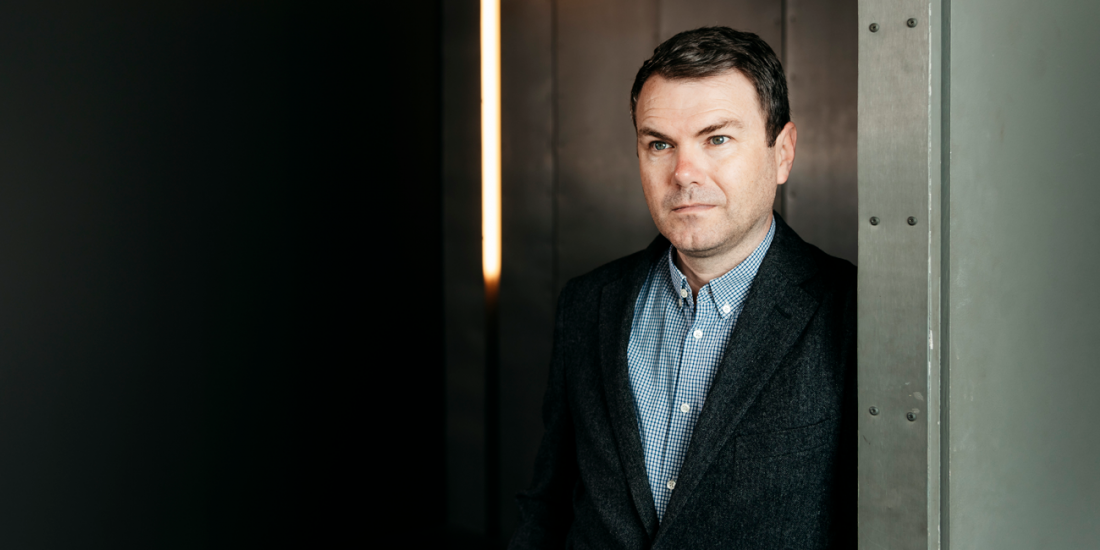Reuben Keehan, curator, Asia Pacific Triennial of Contemporary Art at QAGOMA
What’s inspiring for me is that way that artists and communities are finding forms of agency, ways of expressing themselves, ways of having a say in the way the world looks ...
Whenever the Asia Pacific Triennial of Contemporary Art arrives at QAGOMA, it automatically becomes the must-see exhibition of the year. This year’s iteration, APT’s landmark tenth edition, is no exception. With 150 individuals from 30 countries across the Asia Pacific region contributing personal, political and joyful works, APT’s sheer diversity of artistic endeavour rivals any large-scale exhibition. We spoke to QAGOMA’s curator of Contemporary Asian Art Reuben Keehan about the creation of APT10, the challenges posed by COVID-19 and his thoughts on the exhibition’s highlights …
Being on the team that curates the Asia Pacific Triennial of Contemporary Art exhibition is no doubt a massive undertaking – where does the curatorial process typically start?
The curatorial process for this APT started before we even opened the last one, and that’s pretty typical. That’s because we draw on long-term research and ongoing conversations throughout the region – you could think about our planning patterns as converging cycles of research and exhibition-making. We start with regular conversations within the curatorial group and ask questions like what’s fascinating at the moment, what’s really pressing, what we want to learn more about and what we need to do more of.
The ongoing pandemic naturally had an impact on the organisation and execution of APT10 – can you share any insight on the hurdles COVID-19 presented the in-house curatorial team and how you managed to shape and assemble the exhibition in the wake of such unique and challenging circumstances?
Obviously the speed of events surprised and worried us as much as they did anyone else. Would we be able to finish our research? Would the artists be able to make their work? Would we be able to open on time? Fortunately the curatorial group had been travelling quite regularly, and we had an extensive community to advise us on places we weren’t able to make it to. The artists were extraordinary, and showed remarkable commitment and resilience in often extremely difficult circumstances. The gallery has some phenomenal staff who were able to overcome pretty much every shipping and logistical hurdle thrown at us. Ultimately it was a shame not have the artists present, so a number of performance and site-specific projects will have to wait, but what they produced instead was just as significant.
You have worked on three previous Asia Pacific Triennial exhibitions – how would you say this iteration differs from its predecessors?
Apart from the way the pandemic shaped certain aspects of the form the show, this iteration is most emphatic in its embrace of collaborative and community-based ways of making and sharing, and of integrating the voices of Indigenous, First Nations and minority communities throughout the region into broader discussions around contemporary art in the Asia-Pacific. You can see this on a number of levels throughout the show – right down to the work that Southeast Queensland-based young Pacific creators have put into translating and interpreting selected works for local communities.
APT10 investigates the future of art and the world we inhabit together – in what way is this reflected across the assembled works?
We’ve become accustomed to thinking of the term ‘contemporary art’ as fairly neutral, or as indicating a certain genre of art making, but when you think about it, it’s quite loaded as far as ideas of time go, as well as assumptions of what’s relevant. What we’re seeing in art across the Asia-Pacific are interesting ways of dealing with ideas of time, whether it’s from an Indigenous perspective of bringing the past into the present, or a decolonial perspective of researching the way particular historical developments shape and inform the present. None of what we see is backward looking, however – it’s all future focused, and one of the most fascinating ways we see that is in this emerging aesthetic of ‘Indigenous futurism’, as well as the influence of science fiction that operates throughout the show.
The exhibition spans the entirety of GOMA and also part of the Queensland Art Gallery – what would you say are some of APT10’s must-see pieces for those that are short on time?
As a curator, I think everything’s a must-see, but some the things we’re excited about include the Seleka International Art Society Initiative from Tonga, a co-curated project by Taiwanese indigenous artists, and a multimedia presentation of objects and ceremonies from the Uramat community in Papua New Guinea. Off the beaten track, seek out works by Genevieve Chua, Nguyên Phuong Linh and Bani Abidi, and the excellent Air Canoe project – they’re harder to find, but they’re very rewarding. Over at QAG, there’s a terrific installation by Gidree Bawlee, a massive collaborative project from Bangladesh, being installed in the next month or so, so there are plenty of reasons to keep coming back. Actually, the show is on until the end of April, so you can see the whole thing in little bites if you prefer.
Beyond the artworks themselves, the APT10 program boasts a host of supplementary events – can you shed any insight into the curated extras and how they add to the perception of the exhibition overall?
There is a lot going on in that department. We have our very popular APT10 Kids program across both gallery sites (QAG and GOMA), three film programs screening in our GOMA cinemas, and a number of learning and community engagement initiatives that have fed deeply into the body of the exhibition itself. We’ve also created an online platform, Asia Pacific Art Papers, for deeper perspectives on art and issues in the region, and we have a program of talks, discussions and performances, both online and onsite, that will continue throughout the show. For us, a triennial is not just an exhibition, it’s a constellation of exchanges and encounters that create opportunities for research and engagement. They’re different ways into the APT, if you like, and different ways to stay there.
What insights do you hope attendees take away from the exhibition this time around, particularly in regards to the status, vibrancy and importance of art from Australia and the Asia Pacific region?
On an individual level, there are narratives, histories, forms of expression and often entire cultures that will be new to some people, and familiar to others – in each case I hope they will find some relevance in their lives. On a grander scale, I hope they get a sense of the sheer diversity and dynamism of art making in the region, and the role that it plays in people’s lives. Culture and society in Australia, Asia and the Pacific have been shaped by a lot of powerful forces and continue to be, but what’s inspiring for me is that way that artists and communities are finding forms of agency, ways of expressing themselves, ways of having a say in the way the world looks. More than just enjoying the show, I hope people are inspired in a similar way.
Finally, what would saw is the most personally rewarding aspect of your job as curator, Contemporary Asian Art at QAGOMA?
In part it’s being able to have an ongoing focus, long-term relationships and long-term conversations. Assembling an exhibition of this scale can be a headache at times – so it’s inspiring to go back to that focus on artists and audiences when the show is up at running. If those audiences feel they can be artists themselves, that would be the most rewarding thing.
The tenth edition of the Asia Pacific Triennial of Contemporary Art will be on display at QAGOMA until Monday April 25, 2022. Click here to discover more about this year’s iteration.
Image: Joe Ruckli

